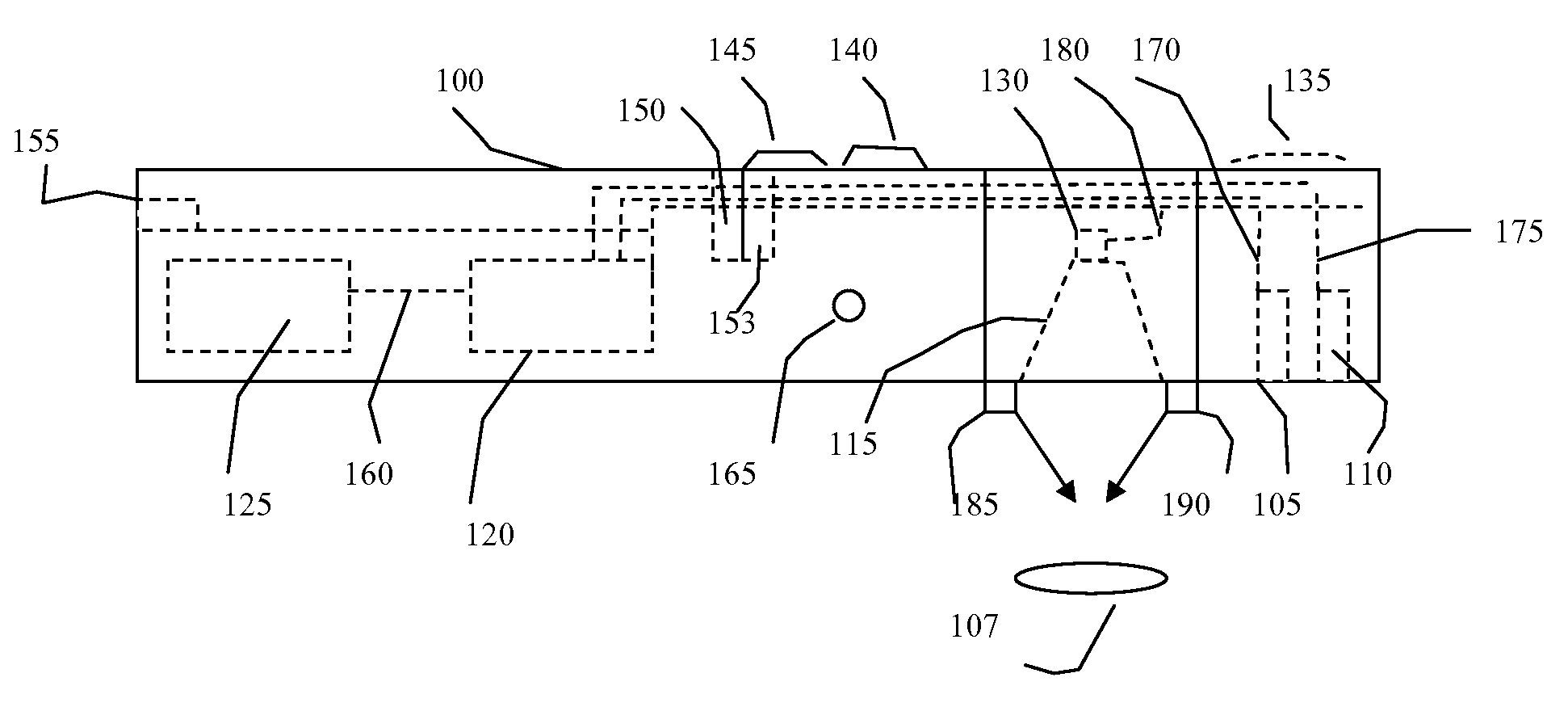Portable touchless vital sign acquisition device
a technology of vital signs and acquisition devices, which is applied in the field of portable touchless vital sign acquisition devices, can solve the problems of limited localization value of ecg, difficult to localize sources directly from the electrical potential map, and reach a larger clinical utilization, so as to reduce the problem of cross-contamination, operate effectively, and achieve sufficient sensitivity
- Summary
- Abstract
- Description
- Claims
- Application Information
AI Technical Summary
Benefits of technology
Problems solved by technology
Method used
Image
Examples
Embodiment Construction
[0042]A non-contact MCG is anticipated as one embodiment. Additionally, a non-contact stethoscope, thermal sensor, or MCG could be utilized singly or in combination with each other, or included singly or together in other medical devices such as a fluoroscope, For example, a handheld, portable instrument comprising a non-contact stethoscope without a magnetometer or thermal sensor can provide a measure of acoustic signals without contacting a subject, while a non-contact thermal sensor as a single device can provide a rapid contactless temperature of a subject.
[0043]With respect to the non-contact stethoscope, a number of sound pickup techniques could be used for acoustic sensing. There are optically based sound pickup devices using lasers that could use the atomic magnetometer light source to develop the signal. More traditional directionally sensitive sound pickup devices may also be used. The non-contact stethoscope would optimally consist of a sound detection device such as a mi...
PUM
 Login to View More
Login to View More Abstract
Description
Claims
Application Information
 Login to View More
Login to View More - R&D
- Intellectual Property
- Life Sciences
- Materials
- Tech Scout
- Unparalleled Data Quality
- Higher Quality Content
- 60% Fewer Hallucinations
Browse by: Latest US Patents, China's latest patents, Technical Efficacy Thesaurus, Application Domain, Technology Topic, Popular Technical Reports.
© 2025 PatSnap. All rights reserved.Legal|Privacy policy|Modern Slavery Act Transparency Statement|Sitemap|About US| Contact US: help@patsnap.com



